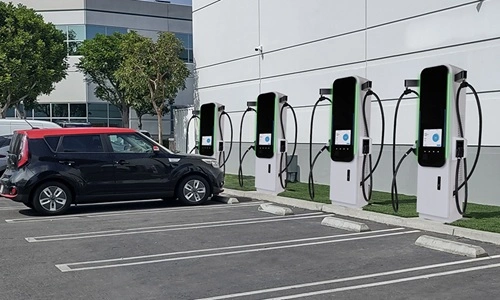With the rise of the internet, we truly saw some new types of business models getting popular too. And sure enough, the P2P, aka Peer-to-Peer, business model is one of them. But let’s say, for some reason, you’re hearing about this type of business model for the very first time, in that case, you must not know what it really means, how it function, what are the actual examples of this type of business model and whether or not it is a good idea to start such a business type. Right? Well, if you have any of these confusions lingering in your head right now, then just keep on reading because we’re about to share the simplest possible definition, real-life examples, and the advantages and disadvantages of the P2P business model here.
What Exactly Is the P2P Business Model?

If we get down to the simplest definition of the P2P model, in actuality, it is not that hard to understand. Here’s how it goes: Directly, user to user, the connection is established, generally via a web portal or a mobile application. Such platforms are not the owners of the products or services. Then what? Well, they simply enable two people to come in contact with each other, transact, and take care of activities such as payment or terms.
If we compare it to the traditional way of doing business, then we would say that, instead of going out to a business to book a service or purchase a product, you make use of a platform that links you directly to the person who has what you need. Regardless of the fact that the user is providing transportation, renting a place, giving a loan, or selling a product, the transactions are no longer monopolized by big corporations. By cutting out the middleman, the operation becomes faster, in most cases, less expensive, and with more adaptability.
Examples of P2P Business Models in Real Life
Examining the examples that are known to be P2P model-based is a good idea to understand it fully. These people-to-people platforms validate the idea that normal people can conduct transactions, use the resources for rent, or provide services without relying on the conventional business network.
- Airbnb
- Uber
- Upwork
- LendingClub
- eBay
- LenDenClub
Advantages of the P2P Business Model
1. Lower Costs
Because there is no conventional intermediary, the total expense is less. And that counts too, like you’ll notice that. To illustrate, ride-sharing apps merely take a minimal service fee, which makes it possible for both the driver and the passenger to keep money.
2. No Need for Physical Inventory
On this particular platform, the users are the owners of the things, not the platform itself. As a result, the company is not required to allocate money towards inventory or facilities, thus it is able to maintain low operating costs and expand rapidly. That’s a BIG plus point.
3. Direct Communication and Flexibility
It is possible to interact with the other party personally, thus it becomes simpler to adjust or bargain. An instance of this is Airbnb, where you can send a message to the host personally to request modifications to your accommodation.
4. Income Opportunities for Everyone
P2P models allow individuals to make money from items or skills they already have, such as a car, a spare room, or a skill. Additionally, freelancers who live in secluded areas can still provide services to clients who are located anywhere in the world.
5. Faster Growth with More Users
The value of the platform increases with each new user. How? Take it like this: To illustrate, if more drivers are available on Uber, it will be easier and faster for passengers to get a ride. Such expansion is possible without the need for big financial inputs.
6. Focused Work for Service Providers
The only thing that service providers need is to concentrate on their work, be it driving or designing, while the platform takes care of the marketing, payments, and customer interaction for them.
7. Quicker Processing and Approvals
Lending through platforms is much faster than through traditional banks, so they can give the green light to the loans within shorter time frames. Those who are in urgent need of money can take advantage of this, particularly those who live in areas that are less served or somewhat ignored by financial institutions.
Disadvantages of the P2P Business Model
1. Quality Control Can Be Weak
Not very often, but platforms are not thorough in checking the products or services they offer. A system for bad reviews or an unfair user can result in negative experiences, such as receiving a messy room when you book an Airbnb.
2. Higher Risk of Fraud
Because it is a peer-to-peer system, there is the possibility that the users may cheat or that they will not pay. And sure enough, loan defaults may occur in the P2P lending space. If robust controls are not present, there is a risk of financial losses of some kind.
3. Online Security Concerns
Since almost everything is done via the internet, the probability of data leaks or hacking is always present. Despite all the security measures put in place, if your device is not secure, your personal or financial information can still be a target of theft.
4. Delays in Payment
It is possible that the freelancers or the creditors will have to wait for their money for some time. The processing of payments can have a big impact on the cash flow, especially for those who need to have their accounts credited quickly.
5. Market Saturation and Competition
Platforms become crowded because it is simple to be a part of them. For instance, new sellers on eBay may have difficulty going against the well-established profiles in the same niche.
6. Limited Protection or Refunds
Unlike regular companies, a majority of P2P platforms do not provide the certainty of a fix or a return of money. If an error occurs, the process of getting a solution may take a while, or it may not even be done. At least not in time.
Conclusion
That’ll do it. If you have read through this post thoroughly, then you must have cleared all your doubts regarding the P2P business model. It’s not that hard to understand, but if you take a look at how the actual businesses that work on this concept operate, you’ll understand it in a much better way.



